-
 Bitcoin
Bitcoin $118100
-0.44% -
 Ethereum
Ethereum $3585
5.43% -
 XRP
XRP $3.434
5.65% -
 Tether USDt
Tether USDt $1.000
0.02% -
 BNB
BNB $743.8
3.89% -
 Solana
Solana $178.7
3.84% -
 USDC
USDC $1.000
0.03% -
 Dogecoin
Dogecoin $0.2381
12.81% -
 TRON
TRON $0.3270
3.62% -
 Cardano
Cardano $0.8315
4.93% -
 Hyperliquid
Hyperliquid $44.51
-4.42% -
 Stellar
Stellar $0.4710
1.52% -
 Sui
Sui $3.896
-2.51% -
 Chainlink
Chainlink $18.09
6.98% -
 Hedera
Hedera $0.2681
9.31% -
 Bitcoin Cash
Bitcoin Cash $516.7
4.83% -
 Avalanche
Avalanche $23.95
6.96% -
 Shiba Inu
Shiba Inu $0.00001490
5.67% -
 UNUS SED LEO
UNUS SED LEO $8.966
0.80% -
 Toncoin
Toncoin $3.294
4.39% -
 Litecoin
Litecoin $105.4
4.69% -
 Polkadot
Polkadot $4.356
5.30% -
 Uniswap
Uniswap $10.29
17.25% -
 Monero
Monero $327.9
-3.04% -
 Bitget Token
Bitget Token $4.942
4.33% -
 Ethena USDe
Ethena USDe $1.001
0.08% -
 Pepe
Pepe $0.00001348
2.17% -
 Dai
Dai $1.000
0.02% -
 Aave
Aave $320.8
0.58% -
 Bittensor
Bittensor $411.8
-4.07%
How to interpret the low-level adhesion of the DIF and DEA lines? How to confirm the direction selection signal?
Low-level adhesion of DIF and DEA lines in MACD suggests consolidation; traders should watch line distance, zero line position, and trade volume for breakout signals.
May 29, 2025 at 02:49 am
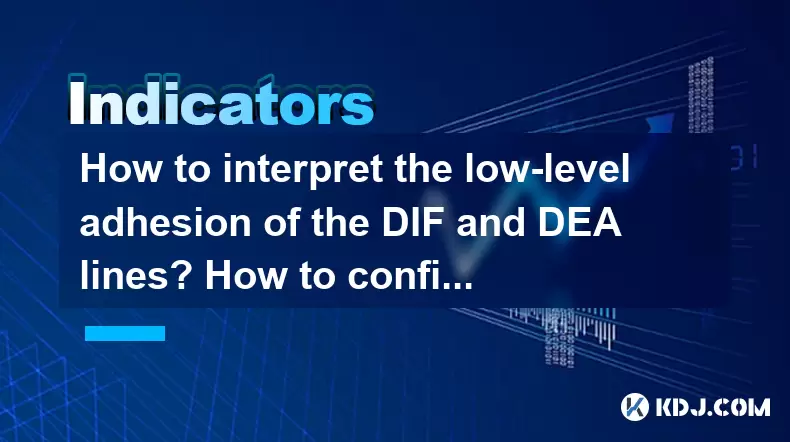
Understanding the low-level adhesion of the DIF and DEA lines in the context of cryptocurrency trading involves delving into the specifics of the Moving Average Convergence Divergence (MACD) indicator. The MACD is a trend-following momentum indicator that shows the relationship between two moving averages of a cryptocurrency's price. The DIF line, also known as the MACD line, is the difference between the 12-period and 26-period exponential moving averages (EMAs). The DEA line, or the signal line, is typically a 9-period EMA of the DIF line. When these lines exhibit low-level adhesion, it suggests that the short-term and long-term trends are closely aligned, often indicating a period of consolidation or a weak trend.
To interpret the low-level adhesion of the DIF and DEA lines effectively, traders need to pay attention to several key factors. The distance between the DIF and DEA lines is crucial. When the lines are very close together and move in tandem, it indicates a lack of strong momentum in either direction. This can be a sign of a market that is waiting for a catalyst to break out of its current range. Additionally, the position of these lines relative to the zero line is important. If both lines are hovering near the zero line, it suggests that the market is in a state of equilibrium, with neither bulls nor bears in control. Traders should also consider the volume of trades during this period. Low volume during low-level adhesion can reinforce the idea of a market in consolidation, while increasing volume might signal an impending breakout.
Confirming the direction selection signal in the context of the MACD involves more than just observing the DIF and DEA lines. Traders need to look for additional corroborating signals from other technical indicators and market conditions. One of the most reliable methods to confirm a direction selection signal is to watch for a crossover of the DIF and DEA lines. A bullish signal is generated when the DIF line crosses above the DEA line, suggesting that the short-term momentum is overtaking the long-term trend and that a potential upward move is on the horizon. Conversely, a bearish signal occurs when the DIF line crosses below the DEA line, indicating that the short-term momentum is declining faster than the long-term trend, potentially leading to a downward move.
In addition to the crossover, traders should also consider the MACD histogram. The histogram represents the difference between the DIF and DEA lines and can provide further insight into the strength of the trend. When the histogram bars are increasing in size, it suggests that the momentum is strengthening in the direction of the crossover. Conversely, decreasing histogram bars indicate weakening momentum. Another important factor to consider is the overall trend of the cryptocurrency's price. If the price is in an uptrend and the MACD confirms a bullish crossover, the signal is more reliable. Similarly, a bearish crossover in a downtrend is more likely to lead to a continued decline.
To further confirm the direction selection signal, traders should also look at other technical indicators. For instance, the Relative Strength Index (RSI) can help identify overbought or oversold conditions. If the RSI is in overbought territory (typically above 70) and the MACD indicates a bearish crossover, it strengthens the case for a potential downward move. On the other hand, if the RSI is in oversold territory (typically below 30) and the MACD indicates a bullish crossover, it supports the likelihood of an upward move. Additionally, support and resistance levels can provide further confirmation. If the price breaks above a significant resistance level following a bullish MACD crossover, it reinforces the signal. Similarly, a break below a significant support level following a bearish MACD crossover strengthens the bearish signal.
Understanding Low-Level Adhesion of DIF and DEA Lines
Low-level adhesion of the DIF and DEA lines occurs when these two lines are closely aligned and move in tandem without significant divergence. This phenomenon often signals a period of consolidation or a weak trend in the market. To interpret this effectively, traders need to consider the distance between the lines, their position relative to the zero line, and the volume of trades during this period. A close distance between the lines, proximity to the zero line, and low trading volume all suggest a market in a state of equilibrium, waiting for a catalyst to break out of its current range.
Key Factors in Interpreting Low-Level Adhesion
Several key factors help traders interpret the low-level adhesion of the DIF and DEA lines. The distance between the DIF and DEA lines is a primary consideration. When the lines are very close together, it indicates a lack of strong momentum in either direction. The position of these lines relative to the zero line also matters. If both lines are near the zero line, it suggests a market in balance, with neither bulls nor bears in control. Additionally, the volume of trades during this period can provide further insight. Low volume during low-level adhesion reinforces the idea of a market in consolidation, while increasing volume might signal an impending breakout.
Confirming Direction Selection Signals with MACD Crossovers
Confirming the direction selection signal using the MACD involves observing crossovers of the DIF and DEA lines. A bullish signal is generated when the DIF line crosses above the DEA line, suggesting that short-term momentum is overtaking the long-term trend and that a potential upward move is on the horizon. Conversely, a bearish signal occurs when the DIF line crosses below the DEA line, indicating that short-term momentum is declining faster than the long-term trend, potentially leading to a downward move. These crossovers are critical in confirming the direction of the market.
Utilizing the MACD Histogram for Confirmation
The MACD histogram provides additional confirmation for direction selection signals. The histogram represents the difference between the DIF and DEA lines and can show the strength of the trend. When the histogram bars are increasing in size, it suggests that the momentum is strengthening in the direction of the crossover. Conversely, decreasing histogram bars indicate weakening momentum. By analyzing the histogram alongside the DIF and DEA lines, traders can gain a more comprehensive understanding of the market's direction.
Integrating Other Technical Indicators
To further confirm the direction selection signal, traders should integrate other technical indicators with the MACD. The Relative Strength Index (RSI) can help identify overbought or oversold conditions. If the RSI is in overbought territory and the MACD indicates a bearish crossover, it strengthens the case for a potential downward move. If the RSI is in oversold territory and the MACD indicates a bullish crossover, it supports the likelihood of an upward move. Additionally, support and resistance levels can provide further confirmation. A break above a significant resistance level following a bullish MACD crossover reinforces the signal, while a break below a significant support level following a bearish MACD crossover strengthens the bearish signal.
Frequently Asked Questions
Q: Can the low-level adhesion of DIF and DEA lines be a precursor to a significant price movement?
A: Yes, the low-level adhesion of the DIF and DEA lines can sometimes precede a significant price movement. When the market is in a state of consolidation and the lines are closely aligned, it often means that the market is waiting for a catalyst. Once a catalyst emerges, it can lead to a breakout in either direction, resulting in a significant price movement.
Q: How long can the low-level adhesion of DIF and DEA lines last?
A: The duration of low-level adhesion can vary widely depending on market conditions. It can last for a few days, weeks, or even months. The key is to monitor other market indicators and volume to gauge when a breakout might occur.
Q: Are there any specific cryptocurrencies where the MACD is more effective?
A: The effectiveness of the MACD does not depend on the specific cryptocurrency but rather on the overall market conditions and volatility. However, cryptocurrencies with higher liquidity and trading volume tend to provide more reliable signals from the MACD due to the increased data points and market activity.
Q: Can the MACD be used as a standalone indicator for trading decisions?
A: While the MACD is a powerful tool, it is generally not recommended to use it as a standalone indicator for trading decisions. It is best used in conjunction with other technical indicators and market analysis to confirm signals and reduce the likelihood of false positives.
Disclaimer:info@kdj.com
The information provided is not trading advice. kdj.com does not assume any responsibility for any investments made based on the information provided in this article. Cryptocurrencies are highly volatile and it is highly recommended that you invest with caution after thorough research!
If you believe that the content used on this website infringes your copyright, please contact us immediately (info@kdj.com) and we will delete it promptly.
- Dogwifhat, Pepe, and Altcoin 2025: Meme Coin Mania or Real Utility?
- 2025-07-19 02:50:13
- Bitcoin: From Niche Crypto to Global Asset Dominating Crypto Finance
- 2025-07-19 02:50:13
- Coinbase System Upgrade: What It Means for Your Crypto
- 2025-07-19 02:30:13
- Riding the Crypto Whale: Bitcoin, Altcoins, and the $5 Trillion Dream
- 2025-07-19 02:30:13
- Bitcoin Core's Disk Fill Bug: Finally Squashed?
- 2025-07-19 02:35:13
- Coinbase (COIN) Soars to All-Time High: What's Next?
- 2025-07-19 00:30:12
Related knowledge
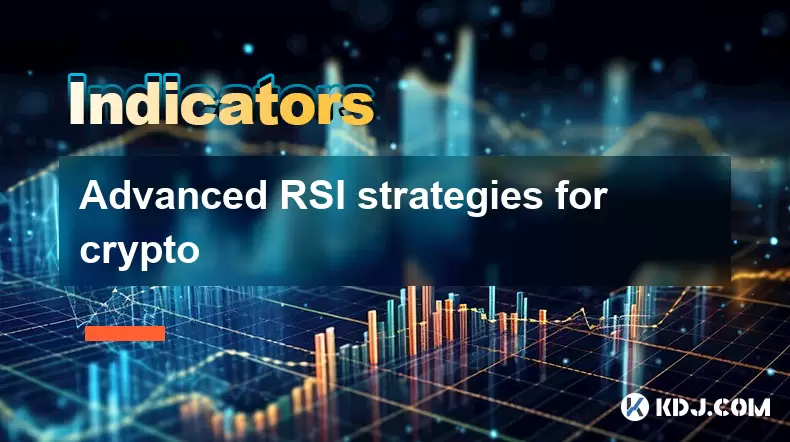
Advanced RSI strategies for crypto
Jul 13,2025 at 11:01am
Understanding the Basics of RSI in Cryptocurrency TradingThe Relative Strength Index (RSI) is a momentum oscillator used to measure the speed and chan...
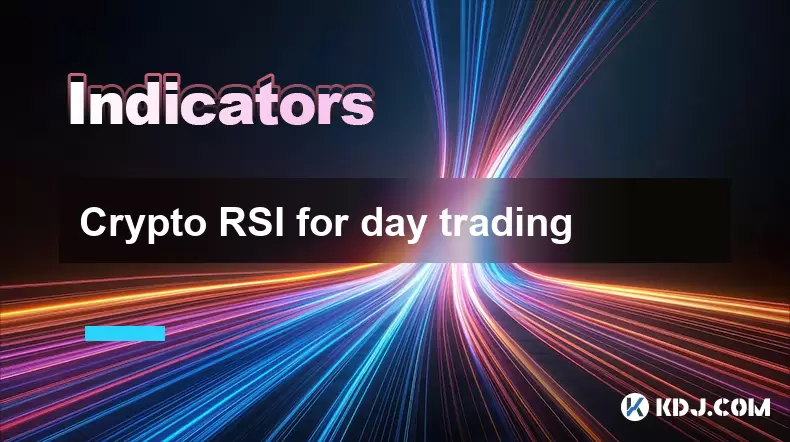
Crypto RSI for day trading
Jul 12,2025 at 11:14am
Understanding RSI in the Context of Cryptocurrency TradingThe Relative Strength Index (RSI) is a momentum oscillator used to measure the speed and cha...
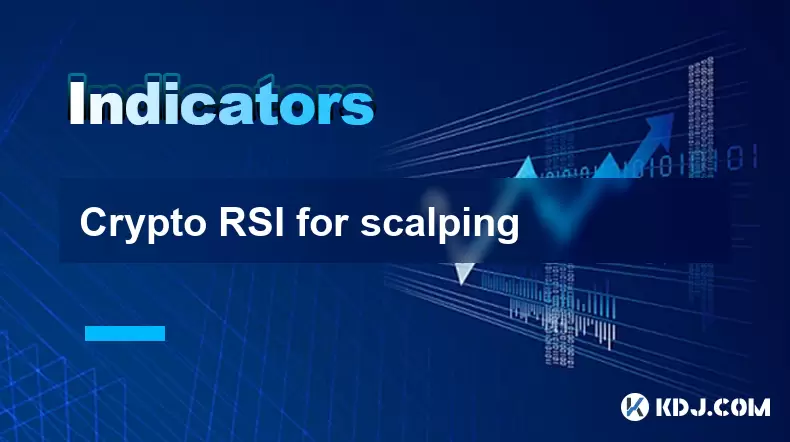
Crypto RSI for scalping
Jul 12,2025 at 11:00pm
Understanding RSI in the Context of Crypto TradingThe Relative Strength Index (RSI) is a momentum oscillator widely used by traders to measure the spe...
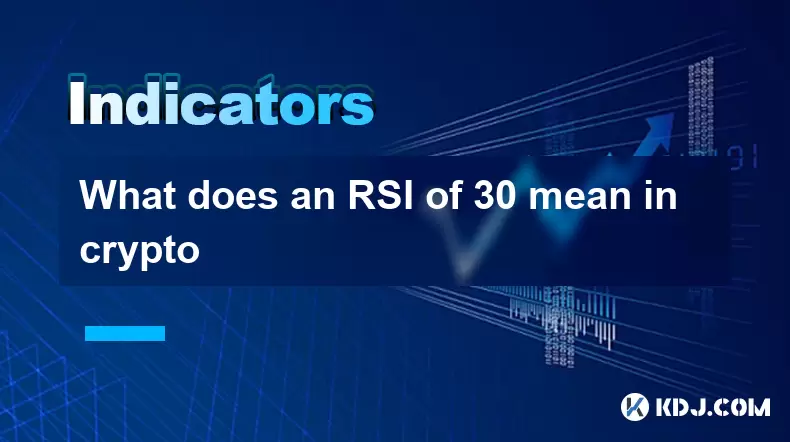
What does an RSI of 30 mean in crypto
Jul 15,2025 at 07:07pm
Understanding RSI in Cryptocurrency TradingRelative Strength Index (RSI) is a momentum oscillator widely used in cryptocurrency trading to measure the...
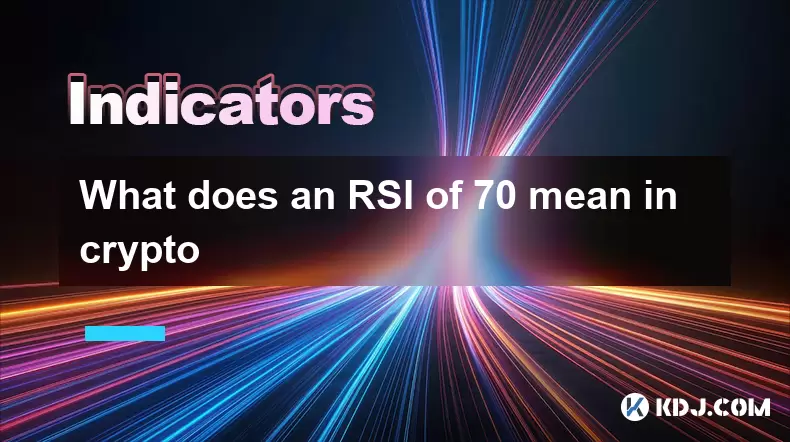
What does an RSI of 70 mean in crypto
Jul 13,2025 at 06:07pm
Understanding the RSI Indicator in Cryptocurrency TradingThe Relative Strength Index (RSI) is a widely used technical analysis tool that helps traders...
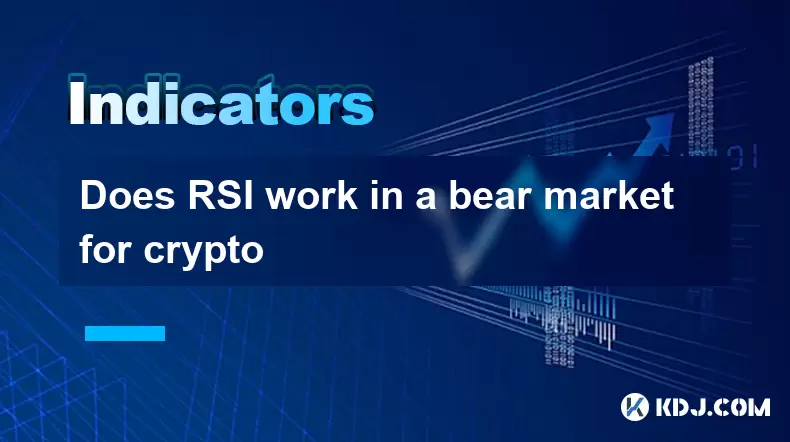
Does RSI work in a bear market for crypto
Jul 16,2025 at 01:36pm
Understanding RSI in Cryptocurrency TradingThe Relative Strength Index (RSI) is a momentum oscillator used by traders to measure the speed and change ...

Advanced RSI strategies for crypto
Jul 13,2025 at 11:01am
Understanding the Basics of RSI in Cryptocurrency TradingThe Relative Strength Index (RSI) is a momentum oscillator used to measure the speed and chan...

Crypto RSI for day trading
Jul 12,2025 at 11:14am
Understanding RSI in the Context of Cryptocurrency TradingThe Relative Strength Index (RSI) is a momentum oscillator used to measure the speed and cha...

Crypto RSI for scalping
Jul 12,2025 at 11:00pm
Understanding RSI in the Context of Crypto TradingThe Relative Strength Index (RSI) is a momentum oscillator widely used by traders to measure the spe...

What does an RSI of 30 mean in crypto
Jul 15,2025 at 07:07pm
Understanding RSI in Cryptocurrency TradingRelative Strength Index (RSI) is a momentum oscillator widely used in cryptocurrency trading to measure the...

What does an RSI of 70 mean in crypto
Jul 13,2025 at 06:07pm
Understanding the RSI Indicator in Cryptocurrency TradingThe Relative Strength Index (RSI) is a widely used technical analysis tool that helps traders...

Does RSI work in a bear market for crypto
Jul 16,2025 at 01:36pm
Understanding RSI in Cryptocurrency TradingThe Relative Strength Index (RSI) is a momentum oscillator used by traders to measure the speed and change ...
See all articles

























































































